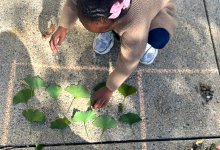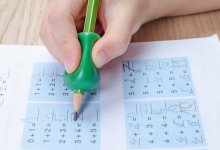K-2 Primary
Explore and share tips, strategies, and resources for helping students develop in elementary school grades K-2.
Fun Fall Math Activities for Kindergarten
Implementing seasonal math strategies in the fall is a simple yet powerful way to build early mathematical understanding.106Your content has been saved!
Go to My Saved Content.Fall Math Manipulatives: Pumpkins, Leaves, and More
Students can get hands-on by incorporating natural objects into curiosity-driven math lessons like measuring and sorting.Your content has been saved!
Go to My Saved Content.A More Efficient and Productive Way to Conduct Math Assessments
Here’s how to assign graded work that more accurately assesses elementary students’ learning and saves time.Your content has been saved!
Go to My Saved Content.Teaching Young Learners Self-Calming Skills
To help early elementary students manage big emotions, try breathing exercises and sharing how you deal with overpowering feelings.Your content has been saved!
Go to My Saved Content.Tips to Help Students With Their Handwriting
These simple tricks to improve motor skills can empower young learners to feel more in control of their handwriting.Your content has been saved!
Go to My Saved Content.A Framework for Building Older Students’ Literacy Skills
Encouraging middle school students to read books of all genres and reading levels can reignite their interest in reading.Your content has been saved!
Go to My Saved Content.The Sensory Room: Helping Students With Autism Focus and Learn
Imagine a safe space where students with autism can go to calm their bodies and then get back to the business of learning.1MYour content has been saved!
Go to My Saved Content.A Conflict Resolution Framework for the Early Grades
Teaching students to put aside their differences until they’re feeling calm can help them learn to resolve issues independently.111Your content has been saved!
Go to My Saved Content.A Fred Rogers–Inspired Approach to SEL
Elementary teachers can focus on these fundamentals of child development to support social and emotional learning.Why Ages 2-7 Matter So Much for Brain Development
Rich experiences—from play to the arts and relationships—fundamentally shape a young child’s development.124.5kYour content has been saved!
Go to My Saved Content.3 Games to Amp Up Reading Instruction
Gamifying literacy and phonics lessons teaches students valuable social-emotional skills, gives them regular movement breaks, and increases their engagement.Making Students Feel Safe
A trauma-informed approach ensures that students feel safe, supported, and nurtured—to improve their chances of academic success.129.8kYour content has been saved!
Go to My Saved Content.Defending a Teacher’s Right to Disconnect
Remember personal time? For many educators, technology has driven it toward extinction—and it’s time to get serious about reclaiming it.22.8kYour content has been saved!
Go to My Saved Content.Using AI to Support Universal Design for Learning in Elementary School
These tech tools provide elementary teachers with ways to differentiate instruction, increasing student engagement and choice.376Your content has been saved!
Go to My Saved Content.Teach Kids When They’re Ready
A new book for parents on developing their kids’ sense of autonomy has some useful insights for teachers as well.106.4kYour content has been saved!
Go to My Saved Content.












